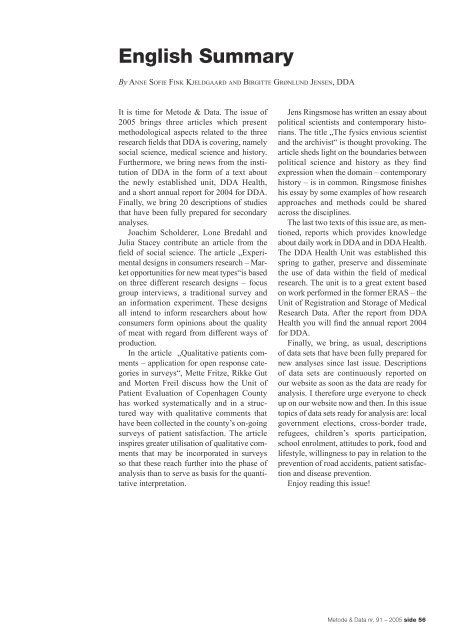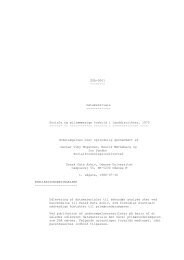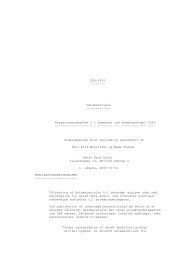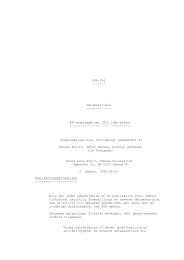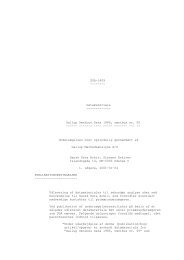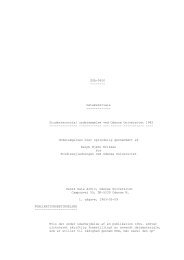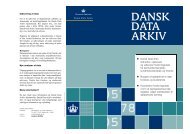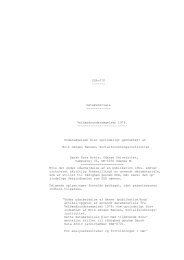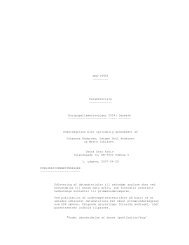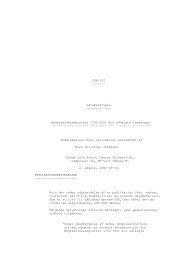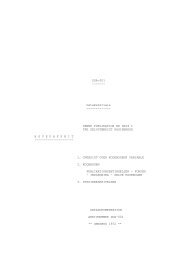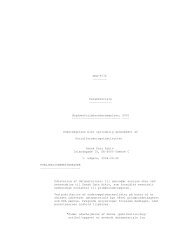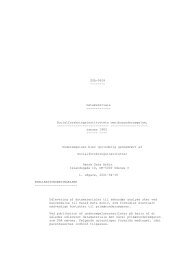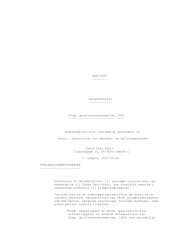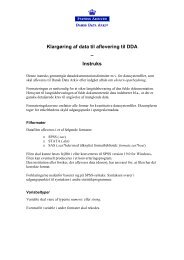Metode & Data 91 C - DDA Samfund - Dansk Data Arkiv
Metode & Data 91 C - DDA Samfund - Dansk Data Arkiv
Metode & Data 91 C - DDA Samfund - Dansk Data Arkiv
You also want an ePaper? Increase the reach of your titles
YUMPU automatically turns print PDFs into web optimized ePapers that Google loves.
English Summary<br />
By ANNE SOFIE FINK KJELDGAARD AND BIRGITTE GRØNLUND JENSEN, <strong>DDA</strong><br />
It is time for <strong>Metode</strong> & <strong>Data</strong>. The issue of<br />
2005 brings three articles which present<br />
methodological aspects related to the three<br />
research fields that <strong>DDA</strong> is covering, namely<br />
social science, medical science and history.<br />
Furthermore, we bring news from the institution<br />
of <strong>DDA</strong> in the form of a text about<br />
the newly established unit, <strong>DDA</strong> Health,<br />
and a short annual report for 2004 for <strong>DDA</strong>.<br />
Finally, we bring 20 descriptions of studies<br />
that have been fully prepared for secondary<br />
analyses.<br />
Joachim Scholderer, Lone Bredahl and<br />
Julia Stacey contribute an article from the<br />
field of social science. The article „Experimental<br />
designs in consumers research – Market<br />
opportunities for new meat types“is based<br />
on three different research designs – focus<br />
group interviews, a traditional survey and<br />
an information experiment. These designs<br />
all intend to inform researchers about how<br />
consumers form opinions about the quality<br />
of meat with regard from different ways of<br />
production.<br />
In the article „Qualitative patients comments<br />
– application for open response categories<br />
in surveys“, Mette Fritze, Rikke Gut<br />
and Morten Freil discuss how the Unit of<br />
Patient Evaluation of Copenhagen County<br />
has worked systematically and in a structured<br />
way with qualitative comments that<br />
have been collected in the county’s on-going<br />
surveys of patient satisfaction. The article<br />
inspires greater utilisation of qualitative comments<br />
that may be incorporated in surveys<br />
so that these reach further into the phase of<br />
analysis than to serve as basis for the quantitative<br />
interpretation.<br />
Jens Ringsmose has written an essay about<br />
political scientists and contemporary historians.<br />
The title „The fysics envious scientist<br />
and the archivist“ is thought provoking. The<br />
article sheds light on the boundaries between<br />
political science and history as they find<br />
expression when the domain – contemporary<br />
history – is in common. Ringsmose finishes<br />
his essay by some examples of how research<br />
approaches and methods could be shared<br />
across the disciplines.<br />
The last two texts of this issue are, as mentioned,<br />
reports which provides knowledge<br />
about daily work in <strong>DDA</strong> and in <strong>DDA</strong> Health.<br />
The <strong>DDA</strong> Health Unit was established this<br />
spring to gather, preserve and disseminate<br />
the use of data within the field of medical<br />
research. The unit is to a great extent based<br />
on work performed in the former ERAS – the<br />
Unit of Registration and Storage of Medical<br />
Research <strong>Data</strong>. After the report from <strong>DDA</strong><br />
Health you will find the annual report 2004<br />
for <strong>DDA</strong>.<br />
Finally, we bring, as usual, descriptions<br />
of data sets that have been fully prepared for<br />
new analyses since last issue. Descriptions<br />
of data sets are continuously reported on<br />
our website as soon as the data are ready for<br />
analysis. I therefore urge everyone to check<br />
up on our website now and then. In this issue<br />
topics of data sets ready for analysis are: local<br />
government elections, cross-border trade,<br />
refugees, children’s sports participation,<br />
school enrolment, attitudes to pork, food and<br />
lifestyle, willingness to pay in relation to the<br />
prevention of road accidents, patient satisfaction<br />
and disease prevention.<br />
Enjoy reading this issue!<br />
<strong>Metode</strong> & <strong>Data</strong> nr. <strong>91</strong> – 2005 side 56


